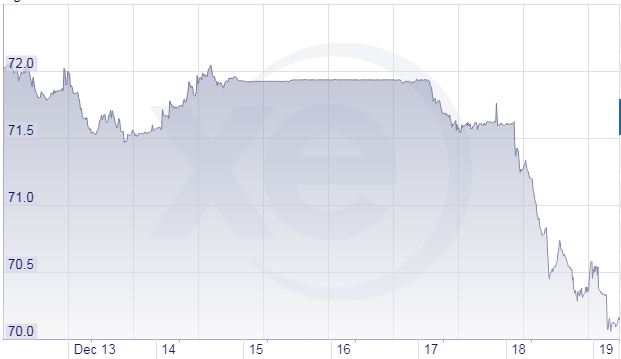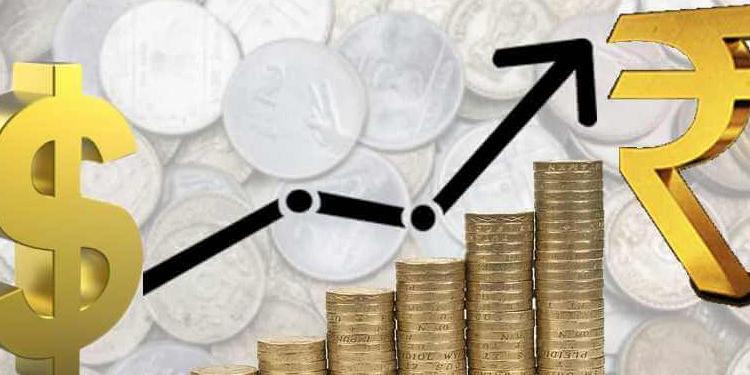India rupee registered a highest single-day gain in the last five years on Tuesday. The Indian currency gained 112 paise to settle at 70.44 against dollars. The rally of rupee was supported by a significant dip in crude oil prices and selling of American currency. The Tuesday’s gain is highest since September 19, 2013, when Rupee climbed 161 paise against the dollar.
The change at the helm of affairs of RBI has given hope to traders about the easing of liquidity constraints in the market. The newly appointed RBI governor Shaktikanta Das is expected to have a dovish stance on interest rates. The traders also expect that he will take actions to liberalize Prompt Corrective Action (PCA) for public sector banks. Government has long held the view that easing out lending norms will fuel credit growth and thus economic growth. The positive sentiment in the market after the appointment of Das is also among the reason behind rupee gain. The bond yield has gone down in last few days which means the purchase of bonds in on rise once again. Bond yields rise when the value of the bond goes down and value goes down when demand is less. The demand for bonds depends on the health of the economy and government finances.

In last months, a slide in the value of the rupee was noticed in comparison to US dollar with reasons being primarily global. The reasons include the ongoing trade war and a rise in crude oil prices. The mainstream media reported this as if a major headwind had hit the Indian economy and worst thing about the reporting was that the reason behind ‘slide in rupee’ did not find prominence. The slide of rupee was reported as if the policies of the Modi government were utterly responsible for this. However, the rise in oil prices was the main reason behind the decline in the value of rupee with other major Asian currencies meeting the same fate. In the light of rising oil prices, the foreign investors from capital rich western economies pulled out money from Asian countries in fear of dwindling public finances and invested in American markets which pushed the dollar northwards.
The left-liberal media establishment assisted the Congress party in spreading fear about the health of the rupee as well as overall health of the domestic economy. The fall in the value of the rupee was primarily driven by sentiments and fear rather than weak macroeconomic fundamentals. Once the fear of trade-war was gone after positive developments between the Chinese and American government, the oil prices started to fall, the rupee strengthened. However, once the condition of rupee improved, none of the mainstream media organisation bothered to report this.
The disdain of Lutyens’ media towards Modi government is clearly visible from the overall reporting on the rupee issue. The short-sighted and ideologically polarised anchors and journalists in English media reported the fall of rupee in a way as if the macroeconomic conditions of the country had become irreparable and the country was on the verge of becoming a defaulter in the international payments system. Indian media exaggerates every issue and the TV shows lack mature content. The media needs to behave more responsibly and should have national interests in the top of their priority list.































